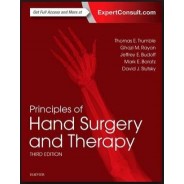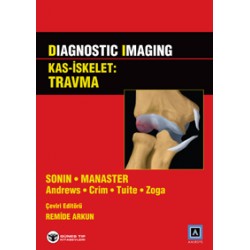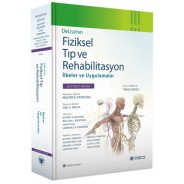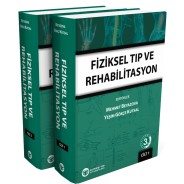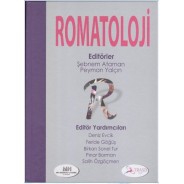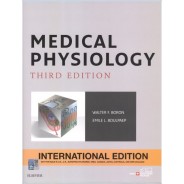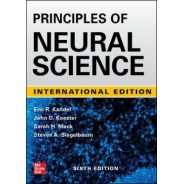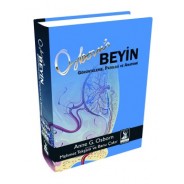Alışveriş sepeti (0) Ürün Ürünler (0)
Sipariş listesinde ürün yok
Kargo Bedava! Kargo
0,00 TL Toplam
Ürün başarıyla alışveriş sepetinize eklendi
Miktarı
Toplam
Sepetinizde 0 ürün bulunmaktadır. Sepetinizde 1 ürün bulunmaktadır.
Toplam ürün:
Fiziksel Tıp ve Rehabilitasyon
- Tıp Kitapları
- Acil Tıp
- Adli Tıp ve kriminoloji
- Aile Hekimliği
- Alerji ve İmmünoloji
- Anatomi
- Anesteziyoloji ve Ağrı
- Biyoloji ve Genetik
- Biyomedikal Mühendisliği
- Biyokimya
- Çocuk Cerrahisi
- Çocuk Sağlığı ve Hastalıkları
- Çocuk ve Ergen Psikiyatrisi
- Dahiliye
- Dermatoloji
- Endokrinoloji
- Farmakoloji
- Fiziksel Tıp ve Rehabilitasyon
- Fizyoterapi, Rehabilitasyon ve Spor Hekimliği
- Fizyoloji
- Gastroenteroloji
- Geleneksel ve Tamamlayıcı Tıp
- Genel Cerrahi
- Geriatri
- Göğüs Hastalıkları
- Kalp Damar Cerrahisi
- Göz Hastalıkları
- Halk Sağlığı
- Hematoloji
- Histoloji ve Embriyoloji
- İnfeksiyon Hastalıkları
- Kadın Hastalıkları ve Doğum
- Kardiyoloji
- Kulak Burun Boğaz Hastalıkları
- Mikrobiyoloji immunoloji
- Nöroşirürji
- Nefroloji
- Nöroloji
- Nükleer Tıp
- Onkoloji
- Ortopedi ve Travmatoloji
- Patoloji
- Plastik Cerrahi
- Sağlıklı Yaşıyoruz
- Spor Hekimliği
- Psikiyatri
- Radyasyon Onkoloji
- Radyoloji
- Romatoloji
- Tıp Tarihi ve Tıp Etiği
- Tıbbı İstatistik Araştırma
- Tıp ve Sağlık Hukuku
- Tıbbi Laboratuvar Deney Bilimi
- USMLE & Board Review
- Üroloji
- Yoğun Bakım
- Göğüs Cerrahisi
- Uyku Tıbbı
- Diş Hekimliği Kitapları
- Eczacılık Kitapları
- Beslenme ve Diyet Kitapları
- Veteriner Hekimlik
- DUS Kitapları
- DUS Akademi Konu Kitapları Serisi
- DUS için Açıklamalı Deneme Sınavları Serisi
- DUS Spot Bilgiler Serisi
- Miadent Konu Kitapları Serisi
- Miadent Soru Kitapları Serisi
- DUS Çıkmış Soru Kitapları
- DUSDATA Şampiyonların Notu
- DUS Review Serisi
- DUSDATAMAX Soru Kitapları Serisi
- DUS Akademi Soru Kitapları Serisi
- Diğer Kitapları Serisi
- TUS Kitapları
- Çıkmış TUS Soru Kitapları
- 41 Deneme Serisi
- MEDOTOMY Serisi
- Tusmer
- Klinisyen Konu Kitapları Serisi
- Optimum Serisi
- Premium Serisi
- PRETUS Deneme Sınavları Serisi
- ProspekTUS Serisi
- Klinisyen Soru Kitapları Serisi
- Tusdata Ders Notları
- Tıbbi İngilizce
- Vaka Soruları Serisi
- Tüm Tus Soruları
- Hızlı Tekrar Serisi
- UTS Serisi
- KAMP ÖZEL NOTLARI
- Meditus Serisi
- YDUS Kitapları
- Hemşirelik ve Ebelik kitapları
- HEMŞİRELİK / halk sağlığı
- HEMŞİRELİK / Hemşirelik Esasları
- HEMŞİRELİK / İç Hastalıkları
- HEMŞİRELİK / Cerrahi Hastalıkları
- HEMŞİRELİK / Kadın hastalıkları ve doğum Ebelik
- HEMŞİRELİK / Ruh Sağlığı ve Hastalıkları
- HEMŞİRELİK / Hemşirelikte Eğitim
- HEMŞİRELİK / Çocuk Sağlığı ve Hastalıkları
- HEMŞİRELİK / Acil tıp hemşireliği
- SAĞLIK BİLİMLERİ
- Çocuk Gelişimi
- Sağlık Yöneticiliği
- Optisyenlik
- Odyoloji
- Saç Bakımı ve Güzellik Hizmetleri
- Anestezi Teknikerliği
- Tıbbi Dökümantasyon ve Sekreterlik
- Tıbbi Laboratuvar Teknisyenliği
- İş Sağlığı ve Güvenliği
- Ergoterapi
- Ağız ve Diş Sağlığı Teknisyenliği
- Dil ve Konuşma Terapisi
- İlk ve Acil Yardım Teknikeri (Paramedik)
- Radyoloji Teknisyenliği
- EĞİTİM BİLİMLERİ
- Değerler Eğitimi
- Eğitim Programları ve Öğretim
- Eğitim Psikolojisi
- Eğitim Yönetimi ve Denetimi
- Eğitimde Drama
- Eğitim Temelleri
- Eğitim Teknolojileri
- Okul Öncesi Eğitim
- Ortaokul Öğretmenliği
- Öğretmenlik Eğitimi Bölümleri
- Ölçme ve Değerlendirme
- Özel Eğitim
- Psikolojik Danışmanlık ve Rehberlik
- Sınıf Öğretmenliği
- Sınıf Yönetimi Etkili Öğretim
- Yabancı Dil Eğitimi
- İLETİŞİM
- İŞLETME
- İKTİSAT / EKONOMİ / MALİYE
- MİMARLIK - SANAT
- BİLİM TEKNİK
- MÜHENDİSLİK - TEKNİK
- FEN BİLİMLERİ
- ÇOCUK VE GENÇLİK KİTAPLARI
- BEŞERİ/SOSYAL BİLİMLER
- ÇEVRE ve YER BİLİMLERİ
- GIDA TARIM ve HAYVANCILIK
- BİYOMEDİKAL MÜHENDİSLİĞİ
- SEYAHAT TURİZM
- SOSYAL ÇALIŞMALAR
- SPOR BİLİMLERİ
- YÖNETİM - SİYASET - ULUSLARARASI İLİŞKİLER
- SINAVLAR HAZIRLIK
- ÖNERİLEN ÜRÜNLER
- Çok Satan Romanlar
- E-Kitaplar
- AYBAK
- Kırtasiye
- Yabancı Dil Eğitimi
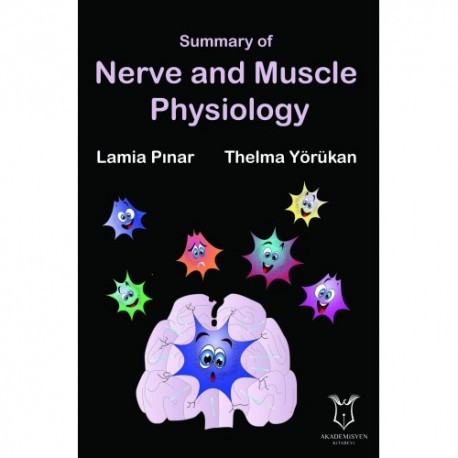 Daha büyük görüntüle
Daha büyük görüntüle Summary of NERVE and MUSCLE PHYSIOLOGY
9786059354684
500,00 TL
400,00 TL
-20%
KDV Hariç: 400,00 TL
- Yorum Yaz
Contents
- Chapter 1. OVERVIEW OF THE NERVOUS SYSTEM (L. Pinar)
- Organization of the Central Nervous System....................................................... 4
- General Functions of the Main Parts of the Brain................................................ 4
- Cerebrum............................................................................................................... 4
- Brainstem............................................................................................................... 5
- Cerebellum............................................................................................................ 6
- Meninges (Meninx).............................................................................................. 6
- Cerebrospinal fluid (CSF) .................................................................................... 6
- Blood Brain Barrier (BBB)..................................................................................... 6
- Cranial Nerves....................................................................................................... 7
- REFERENCES............................................................................................................... 9
- Chapter 2. BIOELECTRIC POTENTIALS OF THE EXCITABLE CELL (L. Pinar)
- Resting Membrane Potential................................................................................. 13
- Generation of the resting membrane potential............................................ 14
- Individual Ions Involved in the Resting Membrane Potential..................... 15
- Nernst Potentials: Equilibrium Potentials of Ions.......................................... 15
- The Equilibrium (Nernst) Potential of Potassium.......................................... 16
- The Equilibrium (Nernst) Potential of Sodium............................................... 17
- Calculation of the Sum Effects of Several Permeable Ions on the
- Resting Membrane Potential: Goldman-Hodgkin-Katz Equation............... 18
- Gibbs Donnan Effect ......................................................................................... 18
- The Effects of Na-K ATPase on Membrane Potential................................... 20
- The Membrane of Excitable Cell...................................................................... 20
- Action Potential.................................................................................................. 22
- Investigation of Ion Channels: Voltage Clamp and Patch Clamp Techniques 26
- REFERENCES............................................................................................................ 27
- Chapter 3. NERVE PHYSIOLOGY (L. Pinar)
- Glial Cells ................................................................................................................. 31
- Astrocytes............................................................................................................ 31
- Functions of Astrocytes..................................................................................... 32
- Oligodendrocytes............................................................................................... 32
- Schwann cells..................................................................................................... 33
- Microglia.............................................................................................................. 33
- Ependymal Cells................................................................................................. 33
- Neurons..................................................................................................................... 33
- The Functional and Structural Parts of a Typical Neuron............................. 33
- Myelinated and Unmyelinated Neurons........................................................ 35
- Distribution of Ion Channels in Neurons........................................................ 36
- Conduction of the Action Potential Along the Axons.................................. 37
- Orthodromic and Antidromic Impulse Conduction...................................... 39
- Mixed Nerves...................................................................................................... 39
- Nerve Fiber Types.............................................................................................. 40
- Transport of Proteins in the Axons ................................................................ 41
- Neurotrophic Factors......................................................................................... 41
- Degeneration and Regeneration of Nerve Fibers........................................ 42
- Demyelinating Diseases................................................................................... 43
- Effects of Changing Concentrations of Plasma Ions on the
- Excitability of Nerves......................................................................................... 43
- Rhythmicity of Some Excitable Tissues........................................................... 45
- Electrotonic Potentials, Local Response ........................................................ 45
- Clinical Aspects........................................................................................................ 46
- Channelopathies (Ion Channel Myopathies)................................................. 46
- REFERENCES............................................................................................................ 47
- Chapter 4. MUSCLE PHYSIOLOGY (L. Pinar)
- Skeletal Muscle........................................................................................................ 51
- Morphology of Skeletal Muscle ....................................................................... 51
- Cross Striation..................................................................................................... 52
- Sarcolemma........................................................................................................ 54
- Sarcotubular System.......................................................................................... 54
- Contractile Proteins of Skeletal Muscle.......................................................... 55
- Thin filaments..................................................................................................... 55
- Thick Filaments .................................................................................................. 56
- Dystrophin-Glycoprotein Complex................................................................. 56
- Electrical Characteristics of Skeletal Muscles................................................. 57
- The Flux of Ions .................................................................................................. 57
- Contraction................................................................................................................ 58
- Muscle Twitch..................................................................................................... 58
- Molecular Basis of Contraction......................................................................... 58
- Excitation-Contraction Coupling...................................................................... 59
- Transmission of the Excitation to Contraction............................................... 60
- Sliding Mechanism............................................................................................. 60
- Relaxation............................................................................................................ 60
- Fatigue................................................................................................................. 61
- Rigor Complex ................................................................................................... 61
- Rigor Mortis......................................................................................................... 61
- The Length and Tension Relationship of Contraction.................................. 61
- Types of Excitation............................................................................................. 62
- Types of Contraction.......................................................................................... 62
- Energy Mechanism of Muscle Contraction........................................................ 63
- Muscle Fiber Types............................................................................................. 64
- Properties of Entire Muscles................................................................................. 65
- Motor Unit............................................................................................................ 65
- Grading of Muscular Activity............................................................................. 66
- Summation of the Contractions: Strengthening of the Muscle Twitches...... 67
- Temporal (Time-Related) Summation............................................................ 67
- Spatial Summation............................................................................................. 68
- Denervation Sensitivity of Skeletal Muscle, Denervation Potentials......... 68
- Diseases of Muscle ................................................................................................. 70
- Muscular Dystrophy........................................................................................... 70
- Channelopathies................................................................................................ 70
- Smooth Muscle......................................................................................................... 71
- REFERENCES............................................................................................................ 73
- Chapter 5. EXERCISE PHYSIOLOGY ( L. Pinar)
- Benefits of Regular (long-term) Aerobic Exercise............................................ 77
- Quantitative Values for Physical Capacities...................................................... 78
- Strength, Power and Endurance of the Muscles........................................... 78
- Energy Systems of Exercises............................................................................. 79
- Recovery of the Muscle Metabolic System after Exercise........................... 79
- Oxygen Debt....................................................................................................... 80
- Maximal Resistance Training............................................................................ 80
- Muscle Training for Hypertrophy and Strengthening .................................. 81
- Effects of the Exercise on the Respiratory System .......................................... 81
- Oxygen Consumption (VO2) ............................................................................ 82
- Effects of the Exercise on the Cardiovascular System .................................... 82
- Summary.............................................................................................................. 83
- Maximal Oxygen Consumption....................................................................... 84
- VO2 max Levels................................................................................................... 84
- Measurement of VO2 max....................................................................................... 84
- Submaximal Level of Exercises........................................................................ 85
- Uth-Sorenson-Overgaard-Pederson Estimation ........................................... 85
- Cooper Test......................................................................................................... 85
- 6-Minute Walk Test ........................................................................................... 86
- Body Heat in Exercise............................................................................................. 86
- Heatstroke........................................................................................................... 86
- Doping Drugs...................................................................................................... 87
- REFERENCES............................................................................................................ 87
- Chapter 6. SYNAPTIC TRANSMISSION (L. Pinar)
- Types of Synapses................................................................................................... 91
- Morphology of Chemical Synapses................................................................. 92
- Presynaptic and Postsynaptic Structures........................................................ 93
- Fusion................................................................................................................... 94
- Divergence and Convergence......................................................................... 94
- Excitatory and Inhibitory Postsynaptic Potentials........................................... 94
- Excitatory Post Synaptic Potential ................................................................... 95
- Inhibitory Post Synaptic Potential.................................................................... 96
- Temporal and Spatial Summation.................................................................... 97
- Slow Post Synaptic Potentials........................................................................... 98
- Function of Dendrites........................................................................................ 98
- Inhibition and Facilitation at Synapses............................................................... 98
- Direct and Indirect Inhibitions.......................................................................... 98
- Presynaptic Inhibition and Facilitation.......................................................... 100
- Organization of Inhibitory Systems............................................................... 101
- Neuromuscular Transmission .......................................................................... 101
- Neuromuscular (or Myoneural) Junction..................................................... 101
- Drugs That Affect the Transition of Action Potential from Nerve to Muscle 104
- Blockers............................................................................................................. 104
- Drugs That Block Acetylcholinesterase........................................................ 104
- Clinical Aspects .................................................................................................... 105
- Myasthenia Gravis ........................................................................................... 105
- Lambert-Eaton Syndrome .............................................................................. 105
- Neurotransmitters................................................................................................. 106
- Neuromodulators............................................................................................. 106
- Receptors.......................................................................................................... 107
- Mechanism of Reuptake................................................................................. 108
- Monoamine Transmitters.................................................................................... 108
- Acetylcholine ................................................................................................... 108
- ACh Receptors.................................................................................................. 108
- Serotonin........................................................................................................... 109
- Serotonin Receptors........................................................................................ 109
- Histamine ......................................................................................................... 109
- Catecholamines .............................................................................................. 109
- Dopamine ........................................................................................................ 110
- Excitatory Amino Acids....................................................................................... 110
- Glutamate.......................................................................................................... 110
- Glutamate Receptors....................................................................................... 110
- Inhibitory Amino Acids....................................................................................... 111
- Glycine .............................................................................................................. 111
- GABA (Gamma Amino Butyric Acid)............................................................. 111
- GABA Receptors............................................................................................... 111
- Large Molecule Transmitters ............................................................................. 112
- Substance P....................................................................................................... 112
- Opioid Peptides................................................................................................ 112
- Clinical Aspects .................................................................................................... 112
- Excitotoxins....................................................................................................... 112
- Role of Serotonin in Mood and Behavior..................................................... 113
- Phenylketonuria............................................................................................... 113
- Schizophrenia .................................................................................................. 113
- REFERENCES.......................................................................................................... 113
- Chapter 7. CUTANEOUS SENSES and PAIN (T. Yörükan)
- Introduction to the Special Senses..................................................................... 117
- Types of Sensation................................................................................................ 117
- Touch and Pressure......................................................................................... 117
- Vibration............................................................................................................ 119
- Proprioception.................................................................................................. 119
- Tickle and Itch................................................................................................... 119
- Thermal Senses................................................................................................ 119
- Two-Point Discrimination............................................................................... 120
- Epicritic sensibility or localisation.................................................................. 120
- Topognosis (localisation of stimuli)............................................................... 121
- Pain or Nociception.............................................................................................. 121
- The Gating Theory............................................................................................ 124
- Somatic Pain............................................................................................................... 124
- Visceral Pain........................................................................................................... 124
- Referred Pain.................................................................................................... 124
- Transmission..................................................................................................... 126
- Lateral Inhibition.............................................................................................. 128
- Analgesia........................................................................................................... 128
- Analgesic Substances............................................................................................ 128
- Opiate Peptides ............................................................................................... 128
- Effect of Acetylcholine on Pain .................................................................... 129
- Cannabinoids in Pain Relief............................................................................ 129
- Pain Suppression in the Brain and Spinal Cord ........................................... 129
- Clinical Aspects ............................................................................................... 130
- Neuropathic Pain................................................................................................... 131
- Sensory Symptoms of Spinal Cord Diseases................................................ 132
- Cortical Representation.................................................................................. 132
- Clinical Aspects................................................................................................ 133
- REFERENCES.......................................................................................................... 134
- Chapter 8. PHYSIOLOGY OF VISION (T. Yörükan)
- Structure of the Eye............................................................................................... 137
- The Sclera.......................................................................................................... 138
- The Choroid...................................................................................................... 140
- The Retina......................................................................................................... 142
- The Optical System of the Eye- the first function of the eye........................ 146
- Lens strength and normal vision................................................................... 148
- Near Point Convergence Reflex.................................................................... 150
- Visual Fixation Reflex....................................................................................... 150
- Binocular Vision ............................................................................................... 150
- Visual Acuity...................................................................................................... 151
- Physiologic Mechanisms in Vision - the second step in vision.................. 151
- Scotopic Vision...................................................................................................... 152
- Photopic Vision..................................................................................................... 152
- Photochemical and Bioelectric Processes in Scotopic vision................... 152
- Mechanism of Excitation................................................................................. 153
- Physiologic Nystagmus................................................................................... 156
- Colour Vision......................................................................................................... 156
- Transmission of signals from the retina to the Visual centres ................. 158
- Lesions at different levels of the Optic tract .............................................. 161
- Eye movements .............................................................................................. 162
- Visual Field and Perimeter.............................................................................. 162
- Scotoma............................................................................................................. 162
- REFERENCES.......................................................................................................... 163
- Chapter 9. AUDITORY PHYSIOLOGY (T. Yörükan)
- Perilymph and Endolymph............................................................................. 171
- Sound - Physical characteristics........................................................................ 171
- The Decibel ...................................................................................................... 172
- Summary of the Auditory process..................................................................... 172
- Cochlear Sound Transmission........................................................................ 172
- Place Theory of Cochlear Function............................................................... 175
- Transmission to the Auditory Cortex................................................................ 176
- The Types of Hearing Loss.................................................................................. 177
- Equilibrium............................................................................................................ 177
- Disturbances of Balance................................................................................. 181
- REFERENCES.......................................................................................................... 181
- Chapter 10. CHEMICAL SENSES OF TASTE AND SMELL OR GUSTATION AND OLFACTION (T. Yörükan)
- Taste or Gustation................................................................................................. 185
- General mechanism of stimulation............................................................... 186
- Localisation....................................................................................................... 188
- Transmission......................................................................................................... 189
- Smell or Olfaction................................................................................................. 190
- Vomeronasal Organ......................................................................................... 191
- Mechanism of Excitation................................................................................. 192
- Sensation modalities....................................................................................... 192
- Transmission......................................................................................................... 193
- Disturbances of Olfaction............................................................................... 195
- REFERENCES.......................................................................................................... 195
- Chapter 11. AUTONOMIC NERVOUS SYSTEM (T. Yörükan)
- Sympathetic Division........................................................................................... 200
- Parasympathetic Division................................................................................... 201
- Synapses.................................................................................................................. 202
- Autonomic Transmitters................................................................................. 202
- Sympathetic postganglionic fibre Effector Organ Synapse....................... 204
- Regulation of Norepinephrine Release and Synthesis.............................. 204
- Adrenergic Receptors..................................................................................... 204
- Alpha Receptors............................................................................................... 205
- Beta Receptors................................................................................................. 205
- Acetylcholine Receptors................................................................................. 206
- Denervation Hypersensitivity............................................................................ 207
- Responses in Effector Organs............................................................................. 207
- The actions of sympathetic nerves on effector organs............................. 207
- Actions of Parasympathetic Nerves on Effector Organs............................ 209
- Cranial Division..................................................................................................... 209
- Responses of Effectors to Autonomic Nerve Impulses................................. 210
- Autonomic reflexes......................................................................................... 212
- Central Control of Autonomic functions........................................................... 213
- REFERENCES.......................................................................................................... 214
- Chapter 12. MOTOR FUNCTIONS OF THE CENTRAL NERVOUS SYSTEM (L. Pinar)
- Three Main Levels of the Central Nervous System Involved in Motor Functions 217
- Spinal cord (Medulla Spinalis) Level.............................................................. 217
- Lower Brain Level............................................................................................ 217
- Upper Brain Level, Cortical Level.................................................................. 218
- The Simplest Motor Activities Of the Spinal Cord.......................................... 219
- Stretch Reflex................................................................................................... 219
- The Effect of the Gamma Motor Neurons.................................................... 222
- Reciprocal Innervation and Inhibition........................................................... 223
- Golgi Tendon Reflex........................................................................................ 223
- Pathological Reflexes...................................................................................... 225
- Withdrawal Reflex (Flexion Reflex)............................................................... 225
- Spinal Shock...................................................................................................... 226
- Brown Sequard Syndrome ............................................................................. 227
- Mass Reflex....................................................................................................... 227
- Clinical Aspects..................................................................................................... 229
- Amyotrophic Lateral Sclerosis (Motor Neuron Disease)............................ 229
- Brainstem and Reticular Formation.................................................................. 230
- Reticular Facilitatory (Excitatory) Area.......................................................... 230
- Reticular Inhibitory Area................................................................................. 231
- Functions of the Neocortex................................................................................. 232
- Cerebral Dominance ...................................................................................... 232
- Control of Motor Functions................................................................................. 234
- Motor Areas in the Cerebral Cortex ............................................................. 235
- Primary Motor Cortex ..................................................................................... 235
- Premotor Cortex.............................................................................................. 236
- Supplementary Motor Cortex........................................................................ 236
- Somatic Sensory Area in Motor activity........................................................ 237
- Initiation of the Motor Commands by the Cerebral Cortex...................... 237
- Control of the Axial and Distal Muscles of the Body..................................... 238
- Corticospinal Tracts............................................................................................. 240
- Lateral Corticospinal Tract (Pyramidal tract)................................................ 240
- Anterior (Ventral) Corticospinal Tract .......................................................... 241
- Corticobulbar Tract.......................................................................................... 242
- Rubrospinal Tract.............................................................................................. 242
- Extrapyramidal System (Ventromedial System Tracts) .............................. 243
- Pontine Reticulospinal Tract (tr. Reticulospinalis medialis)....................... 243
- Medullary Reticulospinal Tract (tr. Reticulospinalis lateralis).................... 243
- Medial and Lateral Vestibulospinal Tracts.................................................... 243
- Tectospinal Tract.............................................................................................. 244
- The Inhibitory Areas of Central Nervous System ....................................... 244
- Decerebrate Rigidity....................................................................................... 245
- Decorticate Rigidity (Spasticity)..................................................................... 246
- Lower and Upper Motor Neurons and Their Lesions ................................ 246
- Lesions of Cortical Areas................................................................................. 247
- Cerebral Palsy (CP).......................................................................................... 249
- Impairment of the Sensorimotor Integration ............................................. 249
- Basal Ganglia.......................................................................................................... 250
- Direct Tract ....................................................................................................... 252
- Indirect Tract..................................................................................................... 252
- Neuronal Circuits of the Basal Ganglia............................................................. 253
- Putamen Circuit............................................................................................... 253
- Caudate Circuit................................................................................................. 254
- Metabolic Properties of the Basal Ganglia................................................... 255
- Clinical Aspects..................................................................................................... 255
- Huntington’s disease....................................................................................... 255
- Parkinson’s Disease (Paralysis Agitans)........................................................ 256
- Cerebellum.............................................................................................................. 257
- Function............................................................................................................. 257
- Afferent Tracts to the Cerebellum from the Brain .................................... 259
- Afferent Tracts to the Cerebellum from the Periphery............................. 259
- Efferent Tracts from the Cerebellum............................................................ 260
- Functional Unit of the Cerebellum............................................................... 260
- Function of the Lateral Hemispheres........................................................... 262
- Romberg Test................................................................................................... 262
| ISBN | 9786059354684 |
| Basım Yılı | 2017 |
| Basım Sayısı | 1 |
| Sayfa Sayısı | 332 |
| Kitap Dili | İngilizce |
| Editör(ler) | Lamia Pınar,Thelma Yörükan |
| BISAC | MED075000 |



